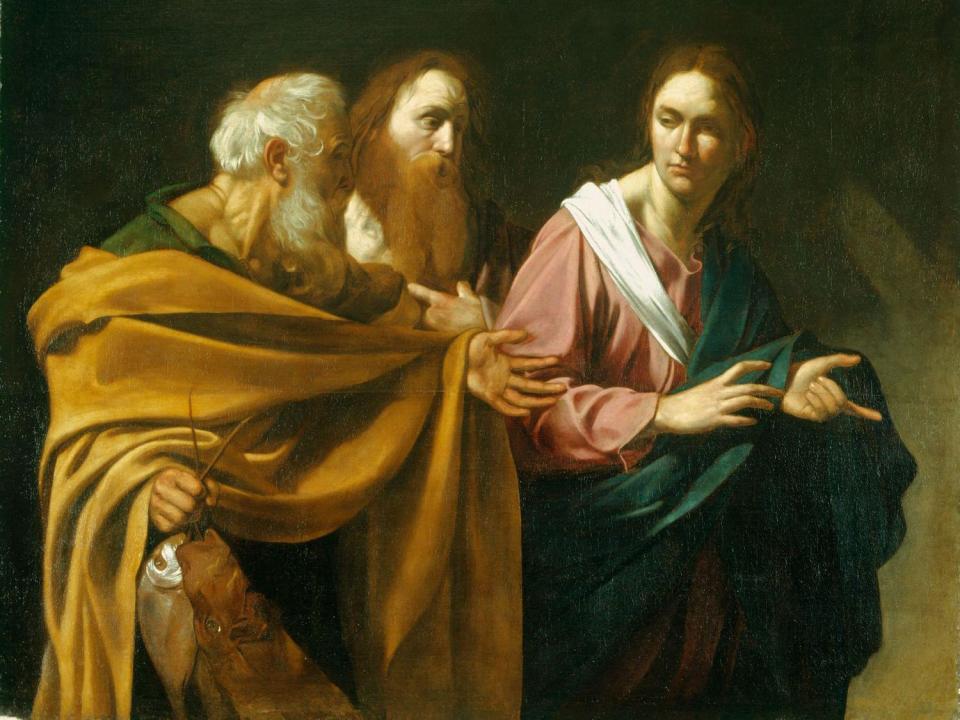St. Andrew’s Day Google Doodle: How did a fisherman become the patron saint of Scotland?

Scots will celebrate St Andrew's Day on 30 November.
A bank holiday every year - marked in today's Google Doodle - the apostle's memory will be toasted on a Monday in 2020, the date granting a long weekend and positively inviting revelry.
But who was the country's patron saint and what are his ties to the homeland of Robert Burns, Sir Walter Scott and Irn-Bru?
Andrew was born in the village of Bethsaida on the Sea of Galilee in 6 BC and was a fisherman by trade.
He and his brother Peter became two of Jesus Christ’s Twelve Apostles or “fishers of men” after they met the Messiah on the shoreline and were called to his side, according to the Gospel of Matthew. John reports that Andrew had previously encountered Jesus as a disciple of John the Baptist, instantly recognising the son of God and vowing to heed the call.
Andrew was present at the Last Supper and went on to preach Christianity in the provinces of Scythia, Achaea and Thrace and along the Black Sea and the Dnieper River, hence his adoption as the patron saint of Greece, Cyprus, Romania, Ukraine and Russia in addition to Scotland.
He was finally crucified by the Romans in the city of Patras, Achaea, on an X-shaped cross, a martyrdom symbolised today on the Saltire - Scotland’s national flag.
Andrew’s remains became holy relics after his death and have been carted across Europe over the centuries. First laid to rest in Constantinople, his skull was eventually exhumed and returned to Patras in the ninth century by Emperor Basil I. The rest of his body was later relocated to Amalfi in Italy for safekeeping by Cardinal Peter of Capua in the aftermath of the sacking of the Ottoman capital in 1208.
Legend has it that the saint’s bones first arrived on Scottish soil thanks to Regulus (or St Rule), a Greek monk who claimed to have experienced a vision in which an angel guided him to bring the relics to “the end of the earth”. St Rule set sail from Patras in 345 and was finally shipwrecked in Fife bearing a kneecap, upper arm, three fingers and a tooth all belonging to Andrew.
This version of events has long been questioned, however, and Andrew’s bones are alternatively said to have reached Britain with an Augustine Mission in 597 before being sent on to Fife by Bishop Acca of Hexham in 732. More recently - relatively speaking - a shoulder blade reputedly belonging to Andrew was gifted to Scotland by the Archbishop of Amalfi in 1879 and Pope Paul VI presented further remains to the nation in 1969.
Andrew was first hailed as Scotland’s patron saint in 832, after Oengus II led an army of Picts and Scots to victory in a battle against Aethelstan’s Angles at East Lothian. Oengus was badly outnumbered and feared defeat until he saw an X-shaped cloud in the sky and interpreted the phenomenon as divine intervention, praying to Andrew and promising to name a day in his honour if his army won the ensuing scrap. They did.
Oengus’s ancient pledge was finally made official in 1320 when Scotland announced its independence from England with the Declaration of Arbroath.
Superstition surrounding Andrew persists to this day and the Saltire is said to prevent witches flying down chimneys when marked next to a fireplace.
Read More

 Yahoo Finance
Yahoo Finance 